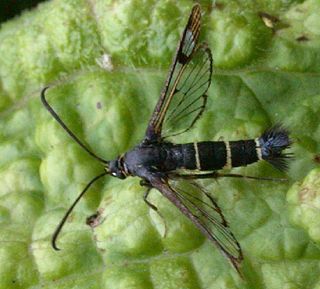
The Sesiidae or clearwing moths are a diurnal moth family in the order Lepidoptera known for their Batesian mimicry in both appearance and behaviour of various Hymenoptera.
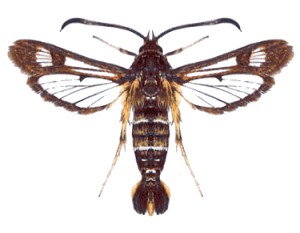
Pyropteron doryliformis, the dock clearwing or dock moth, is a moth of the family Sesiidae. It is found in south-west Europe, North Africa and Australasian realm.
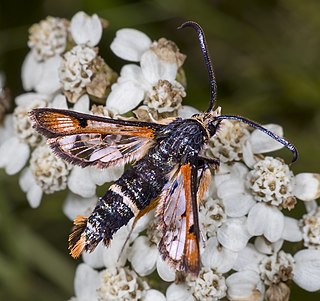
Pyropteron chrysidiforme, the fiery clearwing, is a moth of the family Sesiidae. It is found in Europe, more specifically in Spain, Portugal, Majorca, southern England, Belgium, France, Corsica, Sardinia, Italy and southern Germany.

Bembecia ichneumoniformis, the six-belted clearwing, is a moth of the family Sesiidae.
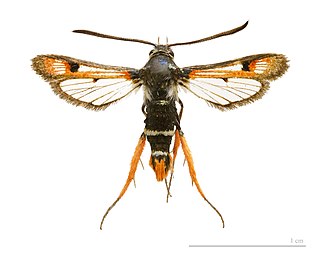
Pyropteron is a genus of moths in the family Sesiidae.
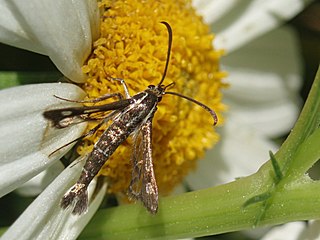
Pyropteron muscaeforme, the thrift clearwing, is a moth of the family Sesiidae. It is known from most of Europe. A small member of its genus, the wingspan is 15–18 mm. It is further distinguished by narrow clear (transparent) spaces on the blackish, or bronzy, forewings. There are three whitish bands on the body, and traces of a whitish line along the middle of the back.

Synanthedon formicaeformis, the red-tipped clearwing, is a moth of the family Sesiidae and can be found in all of Europe, the eastern Palearctic realm, and the Near East. The larvae sometimes form pear-shaped galls on willows. It was first described by Eugenius Johann Christoph Esper in 1783.

Pyropteron triannuliformis is a moth of the family Sesiidae. It is found from most of Europe to the Near East and Central Asia.
Pyropteron cirgisum is a moth of the family Sesiidae. It is found in scattered localities in Romania Ukraine, Russia, Azerbaijan, Turkey, Turkmenistan and Kazakhstan.
Pyropteron affine is a moth of the family Sesiidae. It is found in most of Europe, except Ireland, Great Britain, the Netherlands, Denmark, Fennoscandia, the Baltic region, Poland and Bulgaria. It is also found in Asia Minor, Georgia, the Middle East and North Africa.
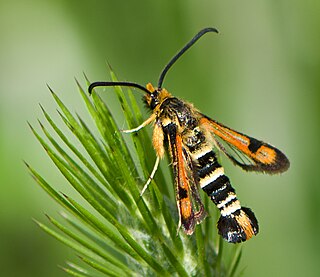
Pyropteron minianiforme is a moth of the family Sesiidae. It is found on the Balkan Peninsula, Crete, Cyprus and in Ukraine. It is also found in Turkey, the Caucasus, the Black Sea region and the Kopet-Dagh.
Pyropteron aistleitneri is a moth of the family Sesiidae. It is found in Spain (Andalusia).
Pyropteron hispanicum is a moth of the family Sesiidae. It is found in southern France, Spain and Portugal (Algarve).
Pyropteron kautzi is a moth of the family Sesiidae. It is found in Spain.
Pyropteron koschwitzi is a moth of the family Sesiidae. It is found in Spain and Portugal.
Pyropteron leucomelaena is a moth of the family Sesiidae. It is found in France, Spain, Portugal, Italy, the Balkan Peninsula and Ukraine. It is also found in North Africa and from Asia Minor to Armenia.
Pyropteron mannii is a moth of the family Sesiidae. It is found in north-western Turkey and the coast of Bulgaria nearest the Black Sea.
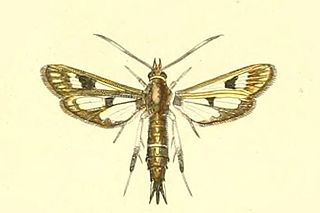
Pyropteron umbrifera is a moth of the family Sesiidae. It is found in Greece.









